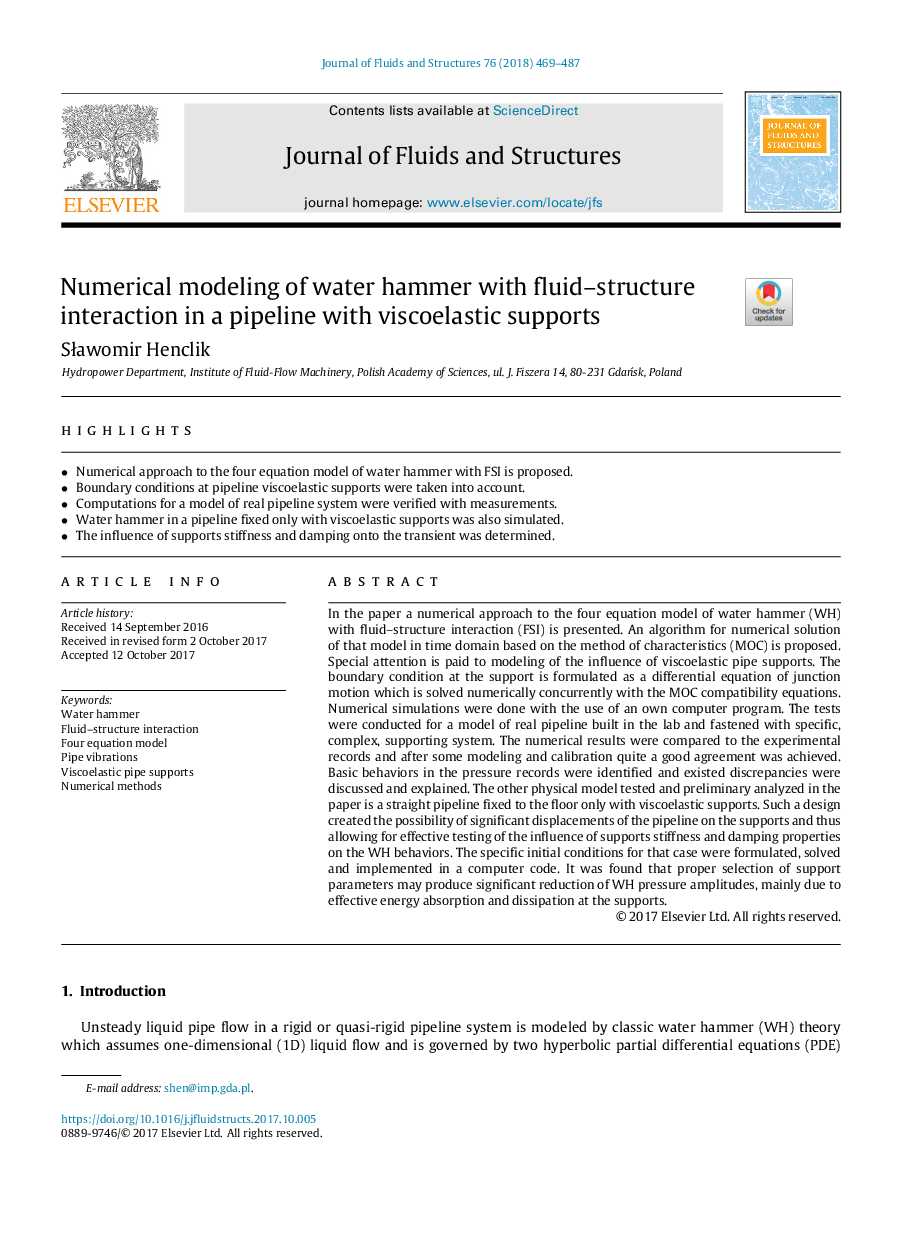| Article ID | Journal | Published Year | Pages | File Type |
|---|---|---|---|---|
| 7175852 | Journal of Fluids and Structures | 2018 | 19 Pages |
Abstract
In the paper a numerical approach to the four equation model of water hammer (WH) with fluid-structure interaction (FSI) is presented. An algorithm for numerical solution of that model in time domain based on the method of characteristics (MOC) is proposed. Special attention is paid to modeling of the influence of viscoelastic pipe supports. The boundary condition at the support is formulated as a differential equation of junction motion which is solved numerically concurrently with the MOC compatibility equations. Numerical simulations were done with the use of an own computer program. The tests were conducted for a model of real pipeline built in the lab and fastened with specific, complex, supporting system. The numerical results were compared to the experimental records and after some modeling and calibration quite a good agreement was achieved. Basic behaviors in the pressure records were identified and existed discrepancies were discussed and explained. The other physical model tested and preliminary analyzed in the paper is a straight pipeline fixed to the floor only with viscoelastic supports. Such a design created the possibility of significant displacements of the pipeline on the supports and thus allowing for effective testing of the influence of supports stiffness and damping properties on the WH behaviors. The specific initial conditions for that case were formulated, solved and implemented in a computer code. It was found that proper selection of support parameters may produce significant reduction of WH pressure amplitudes, mainly due to effective energy absorption and dissipation at the supports.
Related Topics
Physical Sciences and Engineering
Engineering
Mechanical Engineering
Authors
SÅawomir Henclik,
